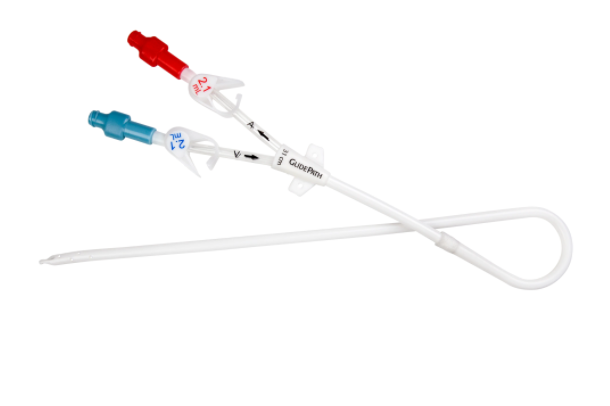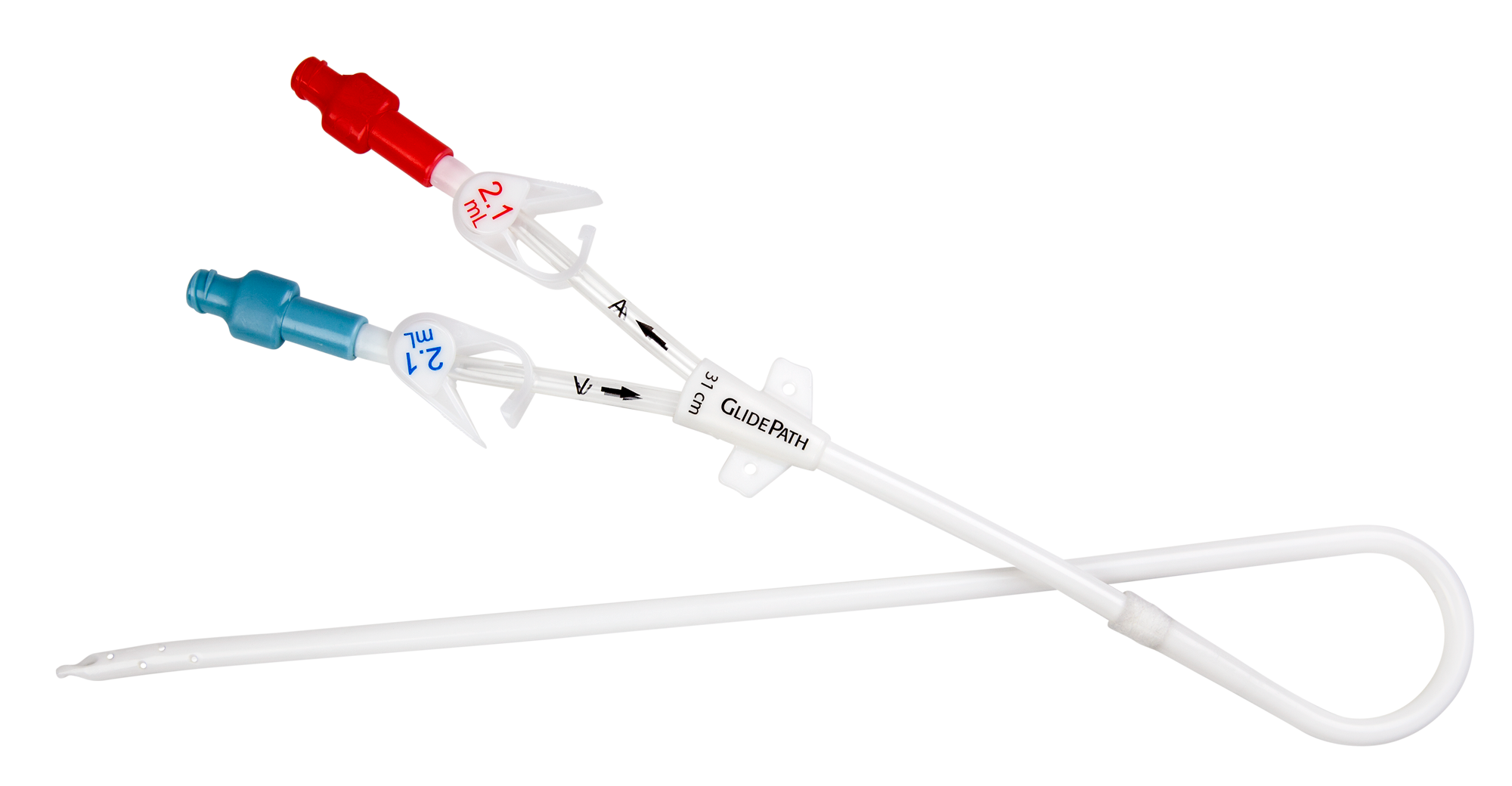WARNING: Percutaneous insertion of the catheter should be made into the axillary-subclavian vein at the junction of the outer and mid-thirds of the clavicle lateral to the thoracic outlet. The catheter should not be inserted into the subclavian vein medially, because such placement can lead to compression of the catheter between the first rib and clavicle and can lead to damage or fracture and embolization of the catheter.1 Fluoroscopic or radiographic confirmation of catheter tip placement should be helpful in demonstrating that the catheter is not being pinched by the first rib and clavicle.
• Alcohol or alcohol-containing antiseptics (such as chlorhexidine) may be used to clean the skin exit site. When cleaning the exit site, inadvertent contact with the catheter is acceptable, but repeated catheter contact should be avoided. Apply antiseptic per manufacturer’s recommendations. Allow to air dry completely before applying dressing. In all cases skin cleaning/disinfection should follow local facility protocols.
• Alcohol should not be used to lock, soak or declot polyurethane Dialysis Catheters because alcohol is known to degrade polyurethane catheters over time with repeated and prolonged exposure.
• Acetone and Polyethylene Glycol (PEG)-containing ointments can cause failure of this device and should not be used with polyurethane catheters. Chlorhexidine patches or bacitracin zinc ointments (e.g., Polysporin* ointment) are the preferred alternative.
• Follow Universal Precautions when inserting and maintaining this device.
• Cardiac arrhythmias may result if the guidewire and/or stylet touches the walls of the right atrium. Use cardiac rhythm monitoring to detect arrhythmias.
• Close all clamps only in the center of the extension legs. Extensions may develop cuts or tears if subjected to excessive pulling or contact with rough edges. Repeated clamping near or on the Luer-lock connectors may cause tubing fatigue and possible disconnection.
• Catheters should be implanted carefully.
• Any sharp or acute angles that could compromise the opening of the catheter lumens need to be avoided.
• To prevent air embolism and/or blood loss put patient in Trendelenburg position and always place thumb over the exposed orifice of the sheath introducer.
• To avoid damage to vessels and viscus, infusion pressures should not exceed 25 psi (172 kPa). The use of a 10 mL or larger syringe is recommended because smaller syringes generate more pressure than larger syringes. Note: A three pound (13.3 Newton) force on the plunger of a 3 mL syringe generates pressure in excess of 30 psi (206 kPa) whereas the same three pound (13.3 Newton) force on the plunger of a 10 mL syringe generates less than 15 psi (103 kPa) of pressure.
• Accessories and components used in conjunction with this catheter should incorporate Luer-lock adapters.
• The heparin solution must be aspirated out of both lumens immediately prior to using the catheter to prevent systemic heparinization of the patient.
• Failure to clamp extensions when not in use may lead to air embolism.
• In the rare event of a leak, the catheter should be clamped immediately. Necessary remedial action must be taken prior to resuming dialysis or infusion procedure.
• The risk of infection is increased with femoral vein insertion.
• Do not resterilize the catheter or components by any method. The manufacturer will not be liable for any damages caused by reuse of the catheter or accessories.
• Cannulation of the left internal jugular vein was reportedly associated with a higher incidence of complications compared to catheter placement in the right internal jugular vein.
• Intended for Single Use. DO NOT REUSE. Reuse and/or repackaging may create a risk of patient or user infection, compromise the structural integrity and/or essential material and design characteristics of the device, which may lead to device failure, and/or lead to injury, illness or death of the patient.
CAUTIONS
• Repeated over tightening of blood lines, syringes and caps will reduce connector life and could lead to potential connector failure. In case of damage, clamp the catheter between the patient and the damaged area with a smoothedged, atraumatic clamp. • Sterile and non-pyrogenic only if packaging is not opened, damaged or broken. • Read the instructions for use carefully before using this device.

